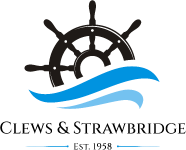Traditional and Digital Boat Navigation Guide
 Learning how to navigate is a crucial skill for any boat owner. The good news is nautical navigation is quite easy to master, thanks to technology and simple traditional methods. If you need more information about boating, visit Clews & Strawbridge in Frazer, Pennsylvania, where we serve the residents of West Chester and Philadelphia.
Learning how to navigate is a crucial skill for any boat owner. The good news is nautical navigation is quite easy to master, thanks to technology and simple traditional methods. If you need more information about boating, visit Clews & Strawbridge in Frazer, Pennsylvania, where we serve the residents of West Chester and Philadelphia.
Traditional Methods of Navigation
Traditional methods of navigation are useful in case your GPS or chartplotters run out of battery power. For this kind of navigation, your most important tool is your eyes and a sense of direction. Then, you will need a compass, chart, dividers, a watch, a pencil, and parallel rulers. A compass will tell you the direction you are going from your starting point. Charts are your maps, and you will use a divider to measure the distance covered by your boat on the chart and a pencil to mark down important details like bearings, location, and speed. A watch helps you keep track of the time over a distance. Parallel rulers also help you measure distance.
How To Navigate
Using a compass, determine your bearing to the obvious shore features that are also present on the chart, like the lighthouse, radio towers, unique landmarks, and navigational markers. Using the magnetic north from your current position, determine the bearing to two landmarks; for example, the lighthouse is 240 degrees, and a radio tower is 90 degrees. Place the compass on the chart, and use parallel rulers to draw lines along the degrees of your two landmarks. The point of intersection to the landmarks is your current location.
Next, mark where you are going. Use parallel rulers to draw a straight line from your boat's current location on the chart to the place where you are going. Use your compass to determine the bearing from the lines drawn. Using your compass, steer your boat to match that bearing until you reach your final destination.
Modern Methods of Navigation
GPS, chartplotters, and various apps make it a lot easier to navigate your boat through the water. All you have to do is enter your current location and your destination on the GPS and follow the route lines given. Many boat owners prefer a chartplotter in navigation because it doesn't just show you the direction, but it also plots a chart for you that you can use to determine where you are going easily.
If you are a beginner, it would be much easier for you to have a modern navigation system. However, carry the traditional tools of boat navigation just in case. Look to us for all your boating needs at Clews & Strawbridge in Frazer, Pennsylvania, serving Philadelphia and West Chester.
